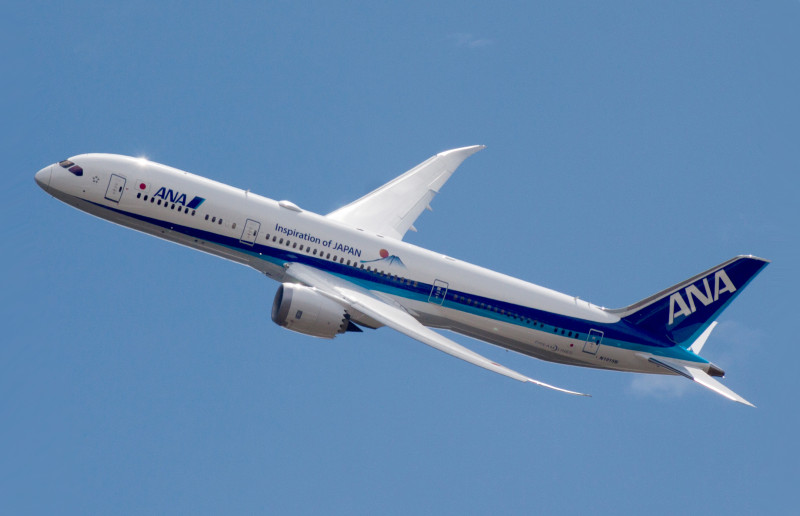Libya, officially the State of Libya, is a North African country in the Maghreb region. It is bordered by the Mediterranean Sea to the north, Egypt to the east, Sudan to the southeast, Chad to the south, Niger to the southwest, Algeria to the west, and Tunisia to the northwest. With an area of almost 1.8 million km2, Libya is the fourth-largest country in Africa and the Arab world, and the 16th-largest in the world. Its capital and largest city is Tripoli, located in the northwest.
1903: Name "Libya" Brought Back
In 1903, the name "Libya" was brought back into use by Italian geographer Federico Minutilli.
1911: Ottoman Rule Ends
In 1911, Ottoman rule ended in Tripolitania, which had been under the Ottoman Empire since 1551.
September 1922: Record air temperature recorded in 'Aziziya
On 13 September 1922, the town of 'Aziziya, located southwest of Tripoli, recorded an air temperature of 58 °C (136.4 °F), considered to be a world record at the time.
1927: Split into Colonies
From 1927, the territory was split into two colonies, Italian Cyrenaica and Italian Tripolitania.
1928: Mass Deaths in Cyrenaica
Starting in 1928, the so-called "pacification of Libya" by the Italians resulted in mass deaths of the indigenous people in Cyrenaica.
September 1931: Execution of Omar Mukhtar
On 16 September 1931, Omar Mukhtar was captured and executed.
1932: Italian military killed half the Bedouin population
Between 1928 and 1932, the Italian military killed half the Bedouin population in Libya.
1932: King Idris Marriage
In 1932, King Idris married his cousin.
1934: Italian Governors
From 1927 to 1934, the territory was split into two colonies, Italian Cyrenaica and Italian Tripolitania, run by Italian governors.
1934: Unified Colony of Libya
In 1934, Italy combined Cyrenaica, Tripolitania and Fezzan and adopted the name "Libya" for the unified colony, with Tripoli as its capital.
1940: Expanded infrastructure
From 1934 to 1940, the Italians expanded Libyan railway and road networks.
August 1942: Internment of Jews in Sidi Azaz
In August 1942, Jews from Tripolitania were interned in a concentration camp at Sidi Azaz.
1943: Italian Libya colony until 1943
From 1934 to 1943, Italian Tripolitania and Italian Cyrenaica were unified in the Italian Libya colony.
1943: Allied Occupation
From 1943, Libya was under Allied occupation.
1943: Return of Idris to Libya
Idris returned to Libya after the Axis powers were ousted in 1943.
1943: End of North African Campaign
In 1943, the North African Campaign ended in defeat for Italy and its German ally.
1944: Idris Returns from Exile
In 1944, Idris returned from exile in Cairo.
November 1945: Pogroms against Jews
In the three years after November 1945, more than 140 Jews were murdered, and hundreds more were wounded, in a series of pogroms.
1947: Italian settlers leave after independence
Most Italian settlers, numbering over half a million at their peak, left Libya after Italian Libya's independence in 1947.
1947: Italy Relinquishes Claims
Under the terms of the 1947 peace treaty with the Allies, Italy relinquished all claims to Libya.
1948: Jewish population remaining in Libya
By 1948, about 38,000 Jews remained in Libya.
November 21, 1949: UN Resolution for Independence
On November 21, 1949, the UN General Assembly passed a resolution stating that Libya should become independent before January 1, 1952.
December 24, 1951: Libyan Independence
On December 24, 1951, Libya declared its independence as the United Kingdom of Libya under King Idris I.
1951: The University of Libya was established
After Libya's independence in 1951, its first university – the University of Libya – was established in Benghazi by royal decree.
1951: Libya under Allied Occupation
From 1943 to 1951, Libya was under Allied occupation.
1951: Libyan Independence
In 1951, Libya became independent as a kingdom.
1951: United Libyan Kingdom
In 1951, Libya gained independence as the United Libyan Kingdom.
1951: Libya's foreign policies fluctuate
Libya's foreign policies have fluctuated since 1951.
1951: Emigration of the Jewish community
Upon Libyan independence in 1951, most of the Jewish community emigrated.
January 1, 1952: UN Resolution for Independence
On November 21, 1949, the UN General Assembly passed a resolution stating that Libya should become independent before January 1, 1952.
1953: Death of King Idris Son
In 1953, King Idris's son died shortly after birth.
1953: Libya becomes a member of the League of Arab States
In 1953, Libya became a member of the League of Arab States and maintained a pro-Western stance.
1955: Libya establishes diplomatic relations with the Soviet Union
In 1955, Libya established full diplomatic relations with the Soviet Union.
1958: Discovery of oil
With the discovery of oil in 1958, the size of the agriculture sector declined rapidly, accounting for less than 5% GDP by 2005.
1959: Discovery of Oil Reserves
In 1959, significant oil reserves were discovered in Libya.
1963: Kingdom of Libya
In 1963, the United Libyan Kingdom changed its name to the Kingdom of Libya.
1964: The population was 1.54 million
In 1964 the population of Libya was 1.54 million.
September 1969: Gaddafi's Coup
On 1 September 1969, a group of rebel military officers led by Muammar Gaddafi launched a coup d'état against King Idris.
1969: Gaddafi closes American and British bases
After the 1969 coup d'état, Muammar Gaddafi closed American and British bases and partly nationalized foreign oil and commercial interests in Libya.
1969: Libyan Arab Republic
Following Gaddafi's coup in 1969, the name of the state was changed to the Libyan Arab Republic.
1969: Gaddafi's Coup
In 1969, a bloodless military coup led by Colonel Muammar Gaddafi overthrew King Idris I and created a republic.
October 1970: Expulsion of Italians
In October 1970, all Italian-owned assets were expropriated and the 12,000-strong Italian community was expelled from Libya.
1970: Equality of the Sexes
In 1970, a law was introduced affirming equality of the sexes and wage parity.
1970: Repatriation after Gaddafi's accession
More Italian settlers repatriated in 1970 after Muammar Gaddafi's accession to power, although a few hundred returned later in the 2000s.
1971: Libyan General Women's Federation
In 1971, Gaddafi sponsored the creation of a Libyan General Women's Federation.
1972: Law criminalizing marriage of girls under sixteen
In 1972, a law was passed criminalizing the marriage of girls under the age of sixteen and making the woman's consent a necessary prerequisite for a marriage.
1973: Civil and sharia courts merged
In 1973, Gaddafi merged civil and sharia courts.
1973: Law 75
In 1973, political dissent was made illegal under Law 75.
1973: UN Security Council passes Resolution 1973
On 17 March 2011, the UN Security Council passed Resolution 1973, sanctioning the establishment of a no-fly zone and the use of "all means necessary" to protect civilians within Libya.
October 1975: Coup attempt by military officers
In October 1975, a coup attempt was launched by a group of 20 military officers, mostly from the city of Misrata, resulting in the arrest and executions of the coup plotters. In 1975, Gaddafi published The Green Book, which inscribed a mix of utopian socialism and Arab nationalism.
1975: Creation of El Kouf protected area
In 1975, Libya created the El Kouf protected area, becoming a pioneer state in North Africa in species protection.
1975: The number of university students was estimated to be 13,418
In the 1975–76 academic year the number of university students was estimated to be 13,418.
1975: The number of public universities has grown from two to twelve
Since 1975 the number of public universities in Libya has grown from two to twelve.
February 1977: Libya delivers military supplies to Chad
In February 1977, Libya started delivering military supplies to Goukouni Oueddei and the People's Armed Forces in Chad, escalating into an invasion and marking the beginning of the Chadian–Libyan War.
March 1977: Libya becomes "Socialist People's Libyan Arab Jamahiriya"
In March 1977, Libya officially became the "Socialist People's Libyan Arab Jamahiriya". Gaddafi officially passed power to the General People's Committees and claimed to be no more than a symbolic figurehead. The new jamahiriya governance structure was officially referred to as "direct democracy".
November 1977: Libya adopts plain green national flag
On 19 November 1977, Libya adopted its plain green national flag, becoming the only country in the world with a plain-coloured flag until 2011.
1977: Socialist People's Libyan Arab Jamahiriya
From 1977, the official name was Socialist People's Libyan Arab Jamahiriya.
1980: Introduction of higher technical and vocational institutes
Since their introduction in 1980, the number of higher technical and vocational institutes in Libya has grown to 84.
1982: Libya hosted the 1982 African Cup of Nations
Libya hosted the 1982 African Cup of Nations and the national team almost won, losing to Ghana on penalties.
1984: The population was 3.6 million
In 1984 the population of Libya was 3.6 million, an increase from the 1.54 million reported in 1964.
1986: Great Socialist People's Libyan Arab Jamahiriya
From 1986, the official name was Great Socialist People's Libyan Arab Jamahiriya.
1986: US airstrike targets Gaddafi
In 1986, a US airstrike led by then US president Ronald Reagan intended to kill Gaddafi but failed.
1986: Near qualification for the FIFA World Cup
The Libyan national team almost qualified for the 1986 FIFA World Cup.
1988: Libya put under UN sanctions after Lockerbie bombing
In 1988, Libya was put under sanctions by the United Nations after the bombing of a commercial flight at Lockerbie which killed 270 people.
1995: Cyrenaica politically unstable
Between 1995 and 1998, Cyrenaica was politically unstable, due to the tribal allegiances of the local troops.
1996: Libya's tightly controlled media
A 1996 analysis by the Committee to Protect Journalists found that Libya's media was the most tightly controlled in the Arab world during the country's dictatorship.
September 1998: Last recorded rainfall at Uweinat
At Uweinat, as of 2006, the last recorded rainfall was in September 1998.
1998: Cyrenaica politically unstable
Between 1995 and 1998, Cyrenaica was politically unstable, due to the tribal allegiances of the local troops.
1998: Budget allocation for education represented 38.2% of the national budget
In 1998 the budget allocation for education represented 38.2% of Libya's national budget.
2000: 28% of the population lacked access to safe drinking water
In 2000, approximately 28% of Libya's population did not have access to safe drinking water.
September 2003: UN sanctions were lifted
In September 2003, UN sanctions were lifted from Libya.
December 2003: Libya announced it would abandon programs to build weapons of mass destruction
In December 2003, Libya announced that it would abandon programs to build weapons of mass destruction.
2003: Authorities privatized more than 100 government owned companies
After 2003, Libyan authorities privatized more than 100 government owned companies in industries including oil refining, tourism and real estate, of which 29 were 100% foreign owned.
2003: Gaddafi announces disarmament of WMDs
In 2003, Gaddafi announced that all of his regime's weapons of mass destruction were disassembled, and that Libya was transitioning toward nuclear power.
2004: The number of university students has increased to more than 200,000
As of 2004, the number of university students in Libya has increased to more than 200,000, with another 70,000 enrolled in the higher technical and vocational sector.
2004: Government estimates of regular and irregular migrant numbers
In 2004, government estimates put the regular and irregular migrant numbers at 1.35 to 1.8 million, which represents 25–33% of the population at the time.
2004: Negotiations for WTO accession started
Negotiations for Libya's accession to the WTO started in 2004.
2004: International Religious Freedom Report
The International Religious Freedom Report 2004 noted that bishops, priests, and nuns wear religious dress freely in public and report virtually no discrimination, while also enjoying good relations with the Government.
2005: 1.5 million yearly air travellers
By 2005 there were 1.5 million yearly air travellers in Libya.
2005: Agriculture sector accounted for less than 5% GDP
In 2005, the size of the agriculture sector declined rapidly, accounting for less than 5% GDP, after oil discovery in 1958.
2006: Situation of rainfall at Uweinat reported
At Uweinat, as of 2006, the last recorded rainfall was in September 1998.
2006: Census figures for foreign nationals
In the 2006 census, around 359,540 foreign nationals were resident in Libya, out of a population of over 5.5 million. This is approximately 6.35% of the population, with Egyptians making up almost half of these immigrants.
2007: Saif al-Islam Gaddafi involved in green development project
In 2007, Saif al-Islam Gaddafi was involved in a green development project called the Green Mountain Sustainable Development Area, which sought to bring tourism to Cyrene and to preserve Greek ruins in the area.
2007: Some new private universities have been established
Since 2007 some new private universities such as the Libyan International Medical University have been established.
2007: Libya divided into 22 districts
Since 2007, Libya has been divided into 22 districts (Shabiyat).
2008: Unemployment rate was 8%
In 2008, the unemployment rate in Libya was 8%, according to census figures.
2008: Participation in the 2008 Summer Olympics
Libya participated in the 2008 Summer Olympics.
2009: Egyptian migrants recorded by the Egyptian embassy in Tripoli
In 2009, the Egyptian embassy in Tripoli recorded as many as 2 million Egyptian migrants, followed by 87,200 Tunisians and 68,200 Moroccans recorded by their respective embassies.
2009: Unemployment rate rose to 21%
In 2009, the unemployment rate in Libya rose to 21%, according to census figures.
2009: There were 18.71 physicians and 66.95 nurses per 10,000 inhabitants
In 2009, there were 18.71 physicians and 66.95 nurses per 10,000 inhabitants in Libya.
October 2010: Gaddafi apologizes for involvement in trans-Saharan slave trade
In October 2010, Gaddafi apologized to African leaders on behalf of Arab nations for their involvement in the trans-Saharan slave trade.
2010: Unemployment for women stands at 18% while for the figure for men is 21%
According to an Arab League report, based on data from 2010, unemployment for women in Libya stands at 18% while for the figure for men is 21%, making Libya the only Arab country where there are more unemployed men than women.
2010: Oil averaged at $80 a barrel
During 2010, when oil averaged at $80 a barrel, oil production accounted for 54% of Libya's GDP.
2010: Healthcare spending accounted for 3.88% of the country's GDP
In 2010, spending on healthcare accounted for 3.88% of Libya's GDP.
2010: Adult literacy rate was 89.2%
In 2010, the adult literacy rate in Libya was 89.2%.
February 2011: Start of the Libyan Civil War
By 22 August 2011, rebel fighters had entered Tripoli and occupied Green Square, which they renamed Martyrs' Square in honour of those killed since 17 February 2011.
February 2011: Protests and revolt against Gaddafi's regime
In February 2011, Libya first experienced protests against Gaddafi's regime on 15 February, with a full-scale revolt beginning on 17 February. By 20 February, the unrest had spread to Tripoli.
March 2011: UN Security Council passes Resolution 1973
On 17 March 2011, the UN Security Council passed Resolution 1973, sanctioning the establishment of a no-fly zone and the use of "all means necessary" to protect civilians within Libya. On 19 March, the first act of NATO allies to secure the no-fly zone began by destroying Libyan air defenses when French military jets entered Libyan airspace on a reconnaissance mission heralding attacks on enemy targets.
March 2011: National Transitional Council established and recognized
On 27 February 2011, the National Transitional Council was established to administer the areas of Libya under rebel control. On 10 March 2011, the United States and many other nations recognised the council headed by Mahmoud Jibril as acting prime minister and as the legitimate representative of the Libyan people and withdrawing the recognition of Gaddafi's regime.
August 2011: Rebel fighters enter Tripoli and occupy Green Square
By 22 August 2011, rebel fighters had entered Tripoli and occupied Green Square, which they renamed Martyrs' Square in honour of those killed since 17 February 2011.
August 2011: Estimated 10 years to rebuild Libya's infrastructure
In August 2011, it was estimated that it would take at least 10 years to rebuild Libya's infrastructure.
August 2011: Libyan Interim Constitutional Declaration
In August 2011, the Libyan interim Constitutional Declaration was established.
September 2011: UN Recognizes Libya
In September 2011, the UN formally recognized the country as "Libya".
October 2011: End of heavy fighting in Sirte; Gaddafi captured and killed
On 20 October 2011, the last heavy fighting of the uprising came to an end in the city of Sirte. Gaddafi was captured and killed by NATO-backed forces on 20 October 2011. The defeat of loyalist forces was celebrated on 23 October 2011.
November 2011: ISO 3166-1 Altered
In November 2011, the ISO 3166-1 was altered to reflect the new country name "Libya" in English and "Libye (la)" in French.
2011: Intense poaching begins after the fall of Gaddafi's regime
After the fall of Muammar Gaddafi's regime in 2011, intense poaching began, facilitated by weapons of war and sophisticated vehicles. More than 500,000 birds are killed each year.
2011: Small number of private institutions were given accreditation
Although before 2011 a small number of private institutions were given accreditation, the majority of Libya's higher education has always been financed by the public budget.
2011: Immigrants fleeing during the revolution
During the 2011 revolution, 768,362 immigrants fled Libya, as calculated by the IOM, which was around 13% of the population at the time, although many more stayed in the country.
2011: Libya's GDP plunged by 60%
In 2011 Libya's GDP plunged by 60%.
2011: Libya adopts its current flag
In 2011, Libya adopted its current flag, ending its status as the only country with a plain-coloured flag.
2011: Civil War and Overthrow of Gaddafi
In 2011, Muammar Gaddafi was overthrown and killed in the civil war, marking the end of his 42-year rule.
2011: Life expectancy at birth was 74.95 years
In 2011, the life expectancy at birth in Libya was 74.95 years, or 72.44 years for males and 77.59 years for females.
2011: End of Great Socialist People's Libyan Arab Jamahiriya
In 2011, the name Great Socialist People's Libyan Arab Jamahiriya was discontinued.
2011: Laws regarding personal status derived from Islamic law
Laws regarding personal status are derived from Islamic law as of 2011.
2011: Migrant labor before the revolution
Prior to the 2011 revolution, official and unofficial figures of migrant labor in Libya ranged from 25% to 40% of the population, which is between 1.5 and 2.4 million people.
2011: Arab Spring and NATO intervention
Since the start of the Arab Spring and the NATO intervention related Libyan Crisis in 2011, the politics of Libya has been in a tumultuous state. Muammar Gaddafi was killed and the Libyan Arab Jamahiriya collapsed.
2011: Overthrow of Muammar Gaddafi
There are an estimated 750,000 Egyptian workers living in Libya, down from more than 2 million prior to the overthrow of Muammar Gaddafi in 2011.
2011: Turkey recorded the evacuation of 25,000 workers during the uprising
Turkey recorded the evacuation of 25,000 workers during the 2011 uprising. The number of Asian migrants before the revolution were just over 100,000.
July 2012: Libyans hold first parliamentary elections
On 7 July 2012, Libyans held their first parliamentary elections since the end of the former regime.
August 2012: National Transitional Council hands power to General National Congress
On 8 August 2012, the National Transitional Council officially handed power over to the wholly-elected General National Congress. On 25 August 2012, a Sufi mosque with graves was bulldozed in Tripoli.
September 2012: World record temperature claim in 'Aziziya invalidated
In September 2012, the world record air temperature figure of 58 °C recorded in 'Aziziya was determined to be invalid by the World Meteorological Organization.
September 2012: Attack on American diplomatic compound in Benghazi
On 11 September 2012, Islamist militants mounted an attack on the American diplomatic compound in Benghazi, killing the US ambassador to Libya, J. Christopher Stevens, and three others.
October 2012: Economy recovered from the 2011 conflict
By October 2012, the economy had recovered from the 2011 conflict, with oil production returning to near normal levels. By October 2012, the average oil production has surpassed 1.4 million bpd.
October 2012: Prime Minister-elect Abushagur ousted; Ali Zeidan elected
On 7 October 2012, Libya's Prime Minister-elect Mustafa A.G. Abushagur was ousted. On 14 October 2012, the General National Congress elected Ali Zeidan as prime minister-designate.
November 2012: Army still in the embryonic stage of development
As of November 2012, the Libyan army was deemed to be still in the embryonic stage of development. President Mohammed Magariaf promised that empowering the army and police force was the government's biggest priority in 2012. President Megarif also ordered that all of the country's militias to come under government authority or disband.
2012: Hundreds of TV stations begin to air
As of 2012, hundreds of TV stations have begun to air due to the collapse of censorship from the old regime and the initiation of free media.
2012: Freedom House improves Libya's rating
Following the 2012 elections, Freedom House improved Libya's rating from Not Free to Partly Free and considered the country an electoral democracy.
2012: Wheat imports estimated at 1 million tonnes
In 2012/13, Libya's wheat imports were estimated at 1 million tonnes, while wheat production was estimated at 200,000 tonnes.
2012: IMF estimated Libya's real GDP growth at 122%
The International Monetary Fund estimated Libya's real GDP growth at 122% in 2012, after a 60% plunge in 2011.
January 2013: Refugee statistics in Libya
According to the UNHCR, in January 2013, there were around 8,000 registered refugees, 5,500 unregistered refugees, and 7,000 asylum seekers of various origins in Libya. Additionally, 47,000 Libyan nationals were internally displaced and 46,570 were internally displaced returnees.
January 2013: Mounting public pressure on National Congress
As of January 2013, there was mounting public pressure on the National Congress to set up a constitution-drafting body.
February 2013: Militias refused to integrate into a central security force
In February 2013, militias had refused to be integrated into a central security force. Many of the militias were disciplined, but the most powerful of them answered only to the executive councils of various Libyan cities. The militias made up the so-called Libya Shield Force, a parallel national force, which operated at the request, rather than at the order, of the defence ministry.
2013: Civil courts employ sharia judges
As of 2013, civil courts employed sharia judges in regular courts of appeal as specialists in sharia appellate cases.
2013: Libya becomes a major transit point for migrants
Between 2013 and 2018, Libya became a major transit point for people trying to reach Europe. Nearly 700,000 migrants reached Italy by boat, many from Libya.
2013: Libya on the World Giving Index
In 2013, Libya made it to the top 20 on the world giving index. According to the Charities Aid Foundation (CAF), almost three-quarters (72%) of all Libyans helped somebody they did not know.
2013: IMF estimated Libya's real GDP growth at 16.7%
The International Monetary Fund estimated Libya's real GDP growth at 16.7% in 2013, after a 60% plunge in 2011.
March 2014: Prime Minister Zeidan steps down
On 11 March 2014, after being ousted by the GNC for his inability to halt a rogue oil shipment, Prime Minister Zeidan stepped down and was replaced by Prime Minister Abdullah al-Thani.
March 2014: General National Congress votes to replace itself
On 30 March 2014, the General National Congress voted to replace itself with a new House of Representatives. The new legislature would allocate 30 seats for women and have 200 seats overall.
May 2014: Start of the Second Civil War
The Second Civil War began in May 2014 following fighting between rival parliaments, with tribal militias and jihadist groups soon taking advantage of the power vacuum.
June 2014: Elections held for the House of Representatives
In June 2014, elections were held to the House of Representatives. Armed supporters of the General National Congress occupied Tripoli, forcing the newly elected parliament to flee to Tobruk.
December 2014: UN Special Representative describes Libya as a non-state
At a meeting of the European Parliament Committee on Foreign Affairs on 2 December 2014, UN Special Representative Bernardino León described Libya as a non-state.
2014: Composition of Libya's population
As of 2014, Libya's native population of Arabs-Berbers, as well as Arab migrants of various nationalities, collectively make up 97% of the population.
2014: Second Civil War
By 2014, Libya was divided between two rival authorities, leading to a second civil war.
2014: Second Libyan civil war began
During the second Libyan civil war, lasting from 2014 to 2020, the water infrastructure suffered neglect and occasional breakdowns.
2014: Libya wins African Nations Championship
In 2014, Libya won the African Nations Championship after beating Ghana in the finals.
2014: Outbreak of Second Libyan Civil War
In 2014, the factional violence in the aftermath of the First Civil War deepened the Libyan Crisis, resulting in the outbreak of the Second Libyan Civil War.
2014: Rise of Jihadist elements
In 2014, ultra-conservative strains of Islam reasserted themselves in places, with Derna in eastern Libya coming under the control of militants aligned with the Islamic State of Iraq and the Levant. Jihadist elements also spread to Sirte and Benghazi.
January 2015: Meetings held to find a peaceful agreement
In January 2015, meetings were held with the aim to find a peaceful agreement between the rival parties in Libya. The so-called Geneva-Ghadames talks were supposed to bring the GNC and the Tobruk government together at one table to find a solution of the internal conflict. However, the GNC actually never participated
February 2015: Mass beheading of Christian Copts by ISIS
In February 2015, a video released by the Islamic State of Iraq and the Levant depicted the mass beheading of Christian Copts.
February 2015: Egypt launches airstrikes against IS
In February 2015, neighbouring Egypt launched airstrikes against IS in support of the Tobruk government.
March 2015: Terrorist attack against the Bardo Museum in Tunisia
The terrorist attack against the Bardo Museum in Tunisia on 18 March 2015 was reportedly carried out by two Libyan-trained militants.
July 2015: UN reports progress of negotiations
In July 2015, SRSG Leon reported to the UN Security Council on the progress of the negotiations, which at that point had just achieved a political agreement on 11 July setting out "a comprehensive framework... includ[ing] guiding principles... institutions and decision-making mechanisms to guide the transition until the adoption of a permanent constitution."
December 2015: Agreement to form national unity government signed
On 17 December 2015, an agreement to form a national unity government was signed. A nine-member Presidency Council and a seventeen-member interim Government of National Accord would be formed, with a view to holding new elections within two years.
2015: Libya ranked 154th out of 180 countries in the Press Freedom Index
In 2015, Libya ranked 154th out of 180 countries in the Press Freedom Index, as reported by Human Rights Watch in 2016.
2015: UN Human Rights Council requests report on Libyan situation
In 2015, the UN Human Rights Council requested a report on the Libyan situation and the High Commissioner for Human Rights established an investigative body (OIOL). Libya also emerged as a major transit point for migrants trying to reach Europe.
2015: Government of National Accord established its own army
In 2015, the internationally-recognised Government of National Accord established its own army that replaced the Libyan National Army, consisting largely of undisciplined and disorganised militia groups.
2016: Journalists are still being targeted by the armed groups in Libya
According to Human Rights Watch annual report, in 2016, journalists are still being targeted by the armed groups in Libya. The organization added that Libya ranked very low in the 2015 Press Freedom Index, 154th out of 180 countries. For the 2021 Press Freedom Index its score dropped to 165th out of 180 countries. Homosexuality is illegal in Libya.
2016: Libya signed the United Nations Framework Convention on Climate Change
In 2016, Libya signed the United Nations Framework Convention on Climate Change (UNFCCC).
2016: Company aims 900,000 barrel per day in the next year
In 2016, an announcement from the company said the company aims 900,000 barrel per day in the next year.
2016: Participation in the 2016 Summer Olympics
Libya participated in the 2016 Summer Olympics.
December 2017: Official Name: State of Libya
In December 2017, the United Nations was informed that the country's official name was henceforth the "State of Libya".
2017: 60% of the Libyan population were malnourished
By 2017, 60% of the Libyan population were malnourished.
2017: Libya signed the UN treaty on the Prohibition of Nuclear Weapons
In 2017, Libya signed the UN treaty on the Prohibition of Nuclear Weapons.
May 2018: Libya's rival leaders agree to hold elections in Paris
In May 2018, Libya's rival leaders agreed to hold parliamentary and presidential elections following a meeting in Paris.
April 2019: Khalifa Haftar launches Operation Flood of Dignity
In April 2019, Khalifa Haftar launched Operation Flood of Dignity, an offensive by the Libyan National Army aimed at seizing Western territories from the Government of National Accord (GNA).
June 2019: GNA forces capture Gharyan
In June 2019, forces allied to Libya's UN-recognized Government of National Accord successfully captured Gharyan, a strategic town where military commander Khalifa Haftar and his fighters were based. Dozens of LNA fighters were killed and at least 18 were taken prisoner.
March 2020: UN-backed government commences Operation Peace Storm
In March 2020, the UN-backed government of Fayez Al-Sarraj commenced Operation Peace Storm in response to assaults carried out by Field Marshal Haftar's LNA.
August 2020: UAE drone attack on Tripoli military academy revealed
On 28 August 2020, the BBC Africa Eye and BBC Arabic Documentaries revealed that a drone operated by the United Arab Emirates (UAE) killed 26 young cadets at a military academy in Tripoli on 4 January. The Chinese-made drone Wing Loong II fired a Blue Arrow 7 missile.
October 2020: Permanent ceasefire signed
On 23 October 2020, a permanent ceasefire was signed to end the war in Libya.
2020: Government hoped to increase food production to 800,000 tonnes of cereals
By 2020, the Libyan government hoped to increase food production to 800,000 tonnes of cereals.
2020: Permanent Ceasefire
In 2020, the two main warring sides in Libya signed a permanent ceasefire, leading to the establishment of a unity government.
2020: Second Libyan civil war ended
The second Libyan civil war lasted from 2014 to 2020, during which the water infrastructure suffered neglect.
February 2021: Formation of interim unity government announced
On 5 February 2021, the formation of an interim unity government was announced after its members were elected by the Libyan Political Dialogue Forum (LPDF).
November 2021: Dbeibeh announces candidacy for president despite ban
In November 2021, Abdul Hamid Dbeibeh announced his candidacy for president despite the ban.
December 2021: Presidential election delayed
In December 2021, Libya's first presidential election was scheduled but was delayed to June 2022 and later postponed further.
December 2021: Election Commission calls for postponement of election
On 22 December 2021, Libya's Election Commission called for the postponement of the election until 24 January 2022.
2021: Libya signed the Paris Climate Agreement
In 2021, Libya signed the Paris Climate Agreement.
2021: Libya's Press Freedom Index score dropped to 165th out of 180 countries
In 2021, Libya's Press Freedom Index score dropped to 165th out of 180 countries, as reported by Human Rights Watch.
January 2022: Election postponed indefinitely
On 22 December 2021, Libya's Election Commission called for the postponement of the election until 24 January 2022. The election was eventually postponed indefinitely.
February 2022: Fathi Bashagha appointed prime minister
In February 2022, Fathi Bashagha was appointed prime minister by the parliament to lead a transitional administration, but Abdul Hamid Dbeibeh refused to hand over power.
March 2022: Dual Power in Libya
In March 2022, the House of Representatives ceased recognising the Government of National Unity and proclaimed an alternative government, leading to dual power in Libya.
April 2022: Tribal leaders shut down El Sharara oil field
On 18 April 2022, tribal leaders from Ubari shut down the El Sharara oil field, Libya's largest oil field, in protest against the Dbeibah government, threatening oil shortages and precluding the exploitation of high oil prices.
June 2022: Presidential election postponed further
In December 2021, Libya's first presidential election was scheduled but was delayed to June 2022 and later postponed further.
2022: 18 provinces declared by the Libyan Government of National Unity
In 2022, 18 provinces were declared by the Libyan Government of National Unity (Libyan Observer): the eastern coast, Jabal Al-Akhdar, Al-Hizam, Benghazi, Al-Wahat, Al-Kufra, Al-Khaleej, Al-Margab, Tripoli, Al-Jafara, Al-Zawiya, West Coast, Gheryan, Zintan, Nalut, Sabha, Al-Wadi, and Murzuq Basin.
2022: Libya ranked fourth on Open Doors' World Watch List
Libya was ranked fourth on Open Doors' 2022 World Watch List, which is an annual ranking of the 50 countries where Christians face the most extreme persecution.
September 10, 2023: Catastrophic floods devastate Derna
On September 10, 2023, catastrophic floods due to dam failures generated by Storm Daniel devastated the port city of Derna, killing more than 5,900 and possibly as many as 24,000. These floods were the worst natural disaster in Libya's modern history.
2023: IOM estimates of foreign labor
As of 2023, the International Organization for Migration (IOM) estimates that approximately 10% of Libya's population, which is upwards of 700,000 people, constitutes foreign labor.
2023: Libya emitted around 23.77 million tonnes of greenhouse gases
In 2023 Libya emitted around 23.77 million tonnes of greenhouse gases, about 0.17% of the world's total emissions, and the nation ranked as the 21st highest emitter per capita globally and the highest in Africa, at just over 13 tonnes per person.
2023: Launch of the National Strategy for Primary Healthcare 2023-2028
In 2023, the Libyan health ministry announced the launch of the National Strategy for Primary Healthcare 2023–2028 to improve services provided by group clinics and health centres. A unique health number allotted to each citizen will facilitate access to medical records.
March 2024: Libya is actively promoting business development
In March 2024, Libya is actively promoting business development and encouraging both domestic and foreign investment, embracing green industries like renewable energy, energy efficiency, sustainable agriculture, and eco-tourism to generate fresh employment prospects.
November 2024: Government to instate morality police
In November 2024, the Government of National Unity would instate a morality police to crack down on "weird haircuts", enforce “modest” clothing, and require male guardians for women.
2024: Libya has not ratified the Paris Agreement
As of 2024, Libya has not ratified the Paris Agreement and submitted its Nationally Determined Contributions (NDCs), and has made little progress toward the development of climate change adaptation plans.
2024: The Ministry of Education announced the launch of the Full-Day School Project
In 2024, the Ministry of Education in Libya announced the launch of the Full-Day School Project in which 12 schools in different parts of the country will have longer school days. The project aims to provide 800 hours of instruction per year to 3,300 elementary school students.
2024: Libya's Global Hunger Index (GHI) score is 19.2
Libya's 2024 Global Hunger Index (GHI) score is 19.2, which indicates a moderate level of hunger. Libya ranks 83rd out of 127 countries.
2028: End date of the National Strategy for Primary Healthcare
In 2023, the Libyan health ministry announced the launch of the National Strategy for Primary Healthcare 2023–2028 to improve services provided by group clinics and health centres. A unique health number allotted to each citizen will facilitate access to medical records.
Mentioned in this timeline
The Union of Soviet Socialist Republics USSR existed from to...
Africa is the second-largest and second-most populous continent comprising of...
Iraq officially the Republic of Iraq is a West Asian...
Tunisia located in North Africa's Maghreb region is officially the...
Turkey officially the Republic of T rkiye is a transcontinental...
The Organization of the Petroleum Exporting Countries OPEC is a...
Trending
Merrill Kelly is an American professional baseball pitcher currently playing for the Arizona Diamondbacks in MLB He debuted in MLB...

1 month ago James Carville criticizes Fox News and Trump in Martha MacCallum interview.

1 day ago Luka Don?i? Reveals Body Transformation After Intense Offseason Training: 'Body Looks Better'

2 months ago Mirra Andreeva vs. Yulia Putintseva at French Open; Putintseva Advances to Second Round

12 days ago Cerúndolo Advances to Swedish Open Semi-Final, Chasing Alcaraz's Clay-Court Wins
2 months ago Chandler Simpson: Rays' speedster steals bases, making history in his first games.
Popular

The Boeing Dreamliner is an American wide-body airliner developed by...

Jeff Hardy is an American professional wrestler currently signed with...

John Michael Ozzy Osbourne is a prominent English singer songwriter...

Jupiter is the fifth and largest planet from the Sun...

Jeff Bezos is an American businessman renowned as the founder...

Candace Owens is an American political commentator and author known...
